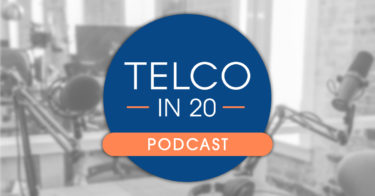I’m so excited you’ve found my blog! As you know by now, I’m launching a podcast (“Telco in 20”), and one of my first guests is my friend, SVP of Human Resources and leadership guru, Jim Abolt.
I met Jim when I was at Trilogy back in 2000, where he implemented a radical and effective approach to HR. Most people think of HR as lame, as the place to go to find out exactly how much vacation time you have accrued. But believe it or not, there is such a thing as “Strategic HR” – these are the leaders who work with executives to help them successfully transform their business (which is really hard work!), and that’s exactly what Jim does.
When I became CEO of Optiva (then Redknee), I was embarking on a plan to resurrect the organization and I needed help to make sure I was successful. So I called Jim and he shared his framework for change with me.
Now if you’re reading this, you must be a telco executive who’s thinking about a very big change – transforming your organization to one that has the public cloud front and center. So I’m going to share Jim’s framework, which helped me lay out the case for change, the ways we were going to motivate everyone, and how we were going to get it done.
Deciding to make a big change is the first step. Now what? Creating the plan is just the start of the transformation you’re leading. But if you work through this framework step-by-step, you’ll be on your way to realizing your vision.
The steps are simple:
- Communicate the Vision
- Create the Desire
- Model the Way
- Change the Work
- Make it Stick
STEP ONE: Communicate the Vision
Or…Everyone understands where we’re going and why.
Communicating the vision is simply being able to succinctly describe a future state of the organization, why it’s imperative that we change, and why that future state is a place we all want to get to as quickly as possible.
To prepare, you need to practice your message over and over saying it the same way every time. You are going to repeat it, a lot, because you need to say it until the very last person in your organization can repeat it back to you (Jim calls this “mind-numbing repetition”). Be sure to ask yourself how effective you are in communicating your vision – and be honest in your assessment. Based on meeting attendance data, are you reaching 100% of your audience? If not, how can you close the gap? Are there other means of communication you should be considering for your message? For example, should you be writing a brief email each week to the whole organization to update them on what’s occurring and remind them where you’re heading?
The biggest mistake I see leaders make with STEP ONE is underestimating the amount (and consistency) of communication that needs to occur for people to “get it.” Whatever you’re doing, you can always do more. If you’re not good at explaining change and inspiring people to get on board, your ability to actually make that change happen will always be limited. Inspiration doesn’t come from detailed project plans; it comes from simply stated, yet profound, ideas that appeal to people’s emotions. Becoming great at explaining your ideas in ways that people embrace will be an invaluable addition to your leadership repertoire.
STEP TWO: Create the Desire
Or…Everyone wants to get there as much as you do.
If your organization is like most others, support for change can be spotty. Some embrace it, while others resist. Nevertheless, you need to work tirelessly to get people on board, or get them off the ship (yes, I said it – people who are not onboard with your direction need to LEAVE). You should take the time to encourage and support people who are trying to come along on the journey, but don’t waste time on laggards. Just show them the door.
A big part of getting people on board with your idea is to clearly describe what’s in it for them. Why is this future state you’re trying to achieve worth it for them? A big motivator I’ve used for moving to the cloud is how much more valuable a CV or resume becomes with public cloud experience. Perhaps mundane and monotonous tasks will be eliminated – “the boring work” – to free up time to work on more exciting, strategic projects. People will need a really good reason to rip up all their hard work on the “old way of doing things” to go through the pain of implementing a new idea – so get them excited and create the desire to slog through your Big Idea.
My favorite definition of leadership is: the ability to get people to WANT to do something the leader believes needs to be done. STEP TWO is about putting that definition into practice. It’s about inspiring commitment rather than demanding compliance. Unfortunately, because this is the most nebulous step in the change process, lots of leaders ignore it. That’s a big mistake. Inspired performance beats perfunctory effort any day.
Want to find out more about actually making this sh*t happen? Then read part two on this topic.



 Get my FREE insider newsletter, delivered every two weeks, with curated content to help telco execs across the globe move to the public cloud.
Get my FREE insider newsletter, delivered every two weeks, with curated content to help telco execs across the globe move to the public cloud.


